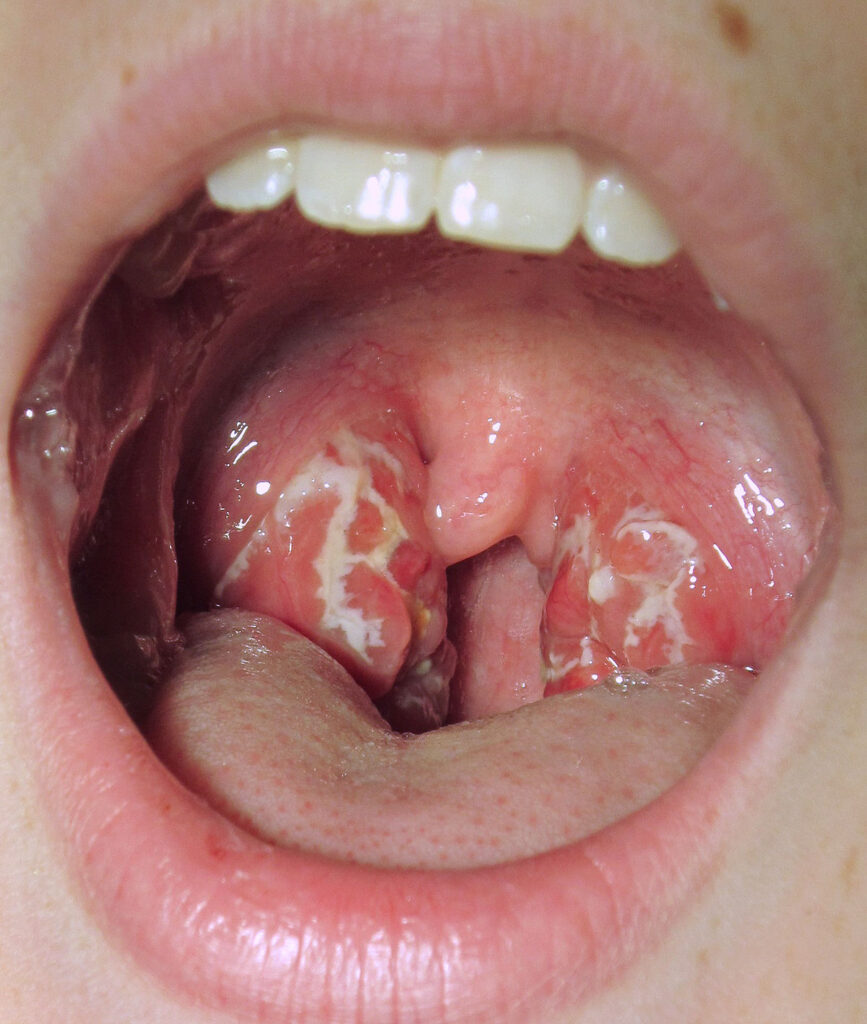Streptococcal infections refer to a range of conditions caused by Streptococcus bacteria, a genus of Gram-positive cocci. These infections vary widely in severity, from mild pharyngitis (strep throat) to life-threatening conditions such as necrotizing fasciitis and streptococcal toxic shock syndrome. The most clinically significant species include Streptococcus pyogenes (Group A Streptococcus, GAS) and Streptococcus agalactiae (Group B Streptococcus, GBS).

Classification of Streptococcus Bacteria
Group A Streptococcus (GAS)
- Streptococcus pyogenes
- Responsible for: strep throat, impetigo, cellulitis, scarlet fever, rheumatic fever, invasive diseases like toxic shock syndrome
Group B Streptococcus (GBS)
- Streptococcus agalactiae
- Common in: neonatal infections, maternal infections during childbirth, urinary tract infections
Other Groups
- Group C & G Streptococcus: Rare, similar to GAS but less virulent
- Viridans Group Streptococci: Associated with endocarditis and dental infections
- Streptococcus pneumoniae: A leading cause of pneumonia, otitis media, and meningitis
Pathogenesis and Transmission
How Streptococcus Spreads
- Person-to-person contact via respiratory droplets, direct contact with infected wounds, or contaminated surfaces
- Vertical transmission during childbirth (especially for GBS)
- Fomites: Surfaces or materials contaminated with infectious secretions
Infection Mechanism
- Entry via mucous membranes or skin breaks
- Rapid multiplication and toxin production
- Possible immune evasion through capsule and M-protein
- Severe cases may result in systemic dissemination
Common Streptococcal Infections
Strep Throat (Pharyngitis)
- Sudden sore throat, fever, red and swollen tonsils, white patches
- Common in school-aged children
- May progress to rheumatic fever if untreated
Scarlet Fever
- Fever, sore throat, red rash with a sandpaper-like texture
- Caused by erythrogenic toxin from S. pyogenes
Impetigo
- Superficial skin infection presenting as honey-colored crusts
- Highly contagious, especially in children
Cellulitis and Erysipelas
- Deep or superficial skin infections marked by redness, warmth, and swelling
- Often involve lymphatic spread
Necrotizing Fasciitis
- “Flesh-eating disease” involving rapid destruction of soft tissue
- Requires emergency surgical intervention
Streptococcal Toxic Shock Syndrome (STSS)
- High fever, hypotension, multi-organ failure
- High mortality without rapid treatment
Invasive Group B Strep Infections
- In neonates: sepsis, pneumonia, meningitis
- In adults: bone, joint, and urinary infections, particularly in the elderly or immunocompromised
Diagnostic Methods
Clinical Assessment
- History and symptomatology (sore throat, rash, skin lesions, fever)
- Physical examination for lymphadenopathy, exudates, or localized infection
Laboratory Testing
- Rapid Antigen Detection Test (RADT) for GAS
- Throat culture: gold standard for strep throat
- Blood cultures for systemic or invasive infections
- Polymerase Chain Reaction (PCR) for pathogen DNA
- Lumbar puncture in suspected meningitis
Treatment and Management
Antibiotic Therapy
- First-line: Penicillin or Amoxicillin for GAS infections
- Alternatives: Cephalosporins or macrolides (e.g., azithromycin) for penicillin-allergic patients
- Severe or invasive infections: Intravenous antibiotics like clindamycin plus penicillin
- GBS prophylaxis in pregnancy: Intravenous Penicillin G during labor
Supportive Care
- Analgesics for pain relief
- Fluids for hydration
- Surgical debridement for necrotizing infections
- ICU care for toxic shock cases
Complications of Streptococcal Infections
- Acute Rheumatic Fever (ARF): Immune-mediated response following untreated strep throat
- Post-Streptococcal Glomerulonephritis (PSGN): Kidney inflammation after skin or throat infection
- Chronic Heart Valve Damage: Due to ARF leading to rheumatic heart disease
- Hearing Loss or Meningeal Damage: If S. pneumoniae causes meningitis
Prevention Strategies
Personal Hygiene and Public Health
- Regular handwashing
- Avoiding close contact with infected individuals
- Cleaning wounds properly
- Cough and sneeze etiquette
Vaccination
- GBS vaccines under development for maternal immunization
- Pneumococcal vaccines (e.g., PCV13, PPSV23) effective against S. pneumoniae
Perinatal Screening
- Vaginal and rectal swabs for GBS at 35–37 weeks gestation
- Prophylactic antibiotics during labor to prevent neonatal infection
Frequently Asked Questions:
What causes a streptococcal infection?
It is caused by bacteria from the Streptococcus genus, commonly Streptococcus pyogenes or Streptococcus agalactiae.
Is strep throat contagious?
Yes, it spreads through respiratory droplets from coughing, sneezing, or sharing utensils.
Can strep infections become dangerous?
Yes. Untreated infections may lead to severe complications like rheumatic fever, sepsis, or toxic shock syndrome.
How are streptococcal infections treated?
Most are treated with antibiotics like penicillin or amoxicillin. Severe infections may require IV antibiotics and hospitalization.
Are there vaccines for streptococcal infections?
There are vaccines for S. pneumoniae, and research is ongoing for Group A and B Streptococcus vaccines.
Streptococcal infections represent a diverse group of illnesses that demand accurate diagnosis and timely treatment. While most cases are manageable with antibiotics, their potential for severe complications requires vigilance. With effective public health strategies, hygiene practices, and ongoing vaccine development, the global burden of these infections can be significantly reduced. We must prioritize early detection, treatment adherence, and preventive screening to ensure optimal health outcomes.

